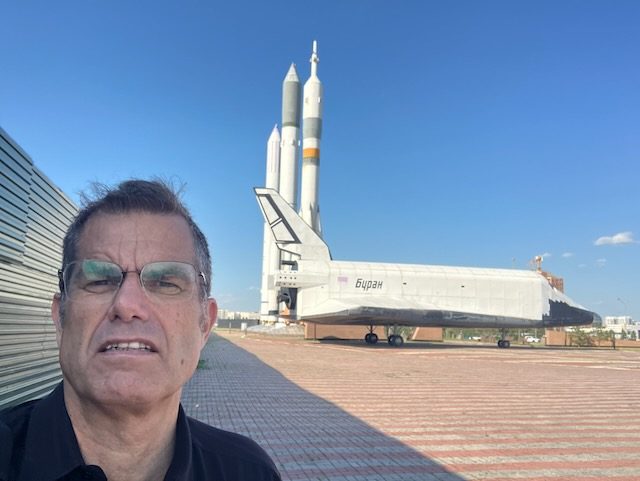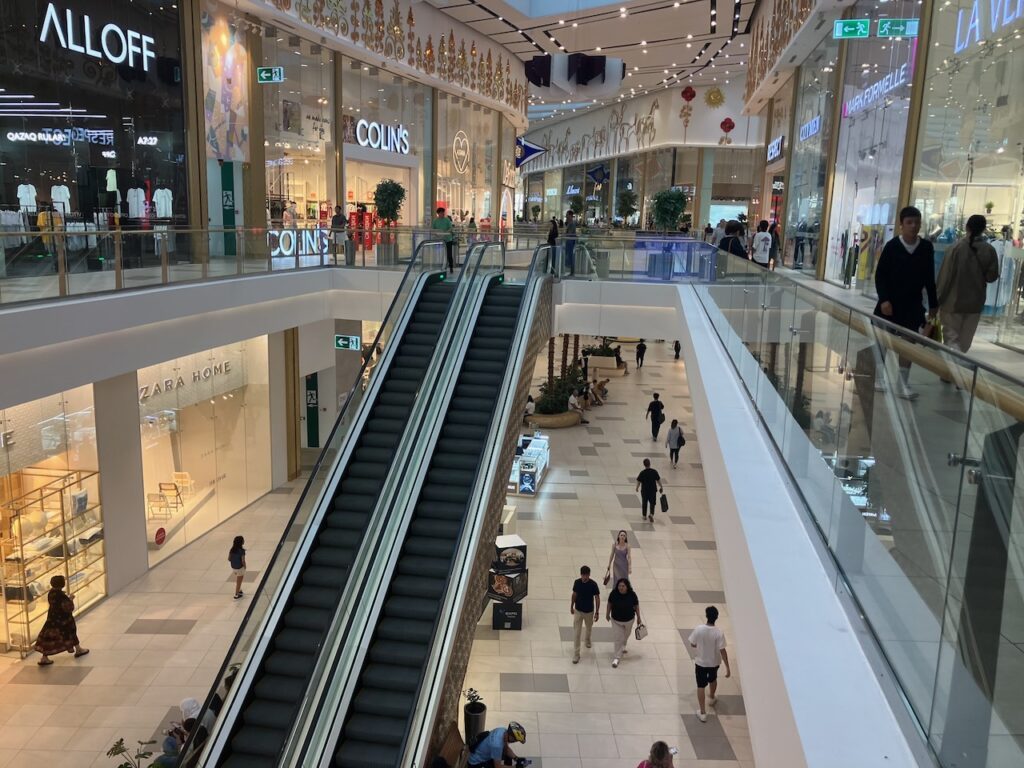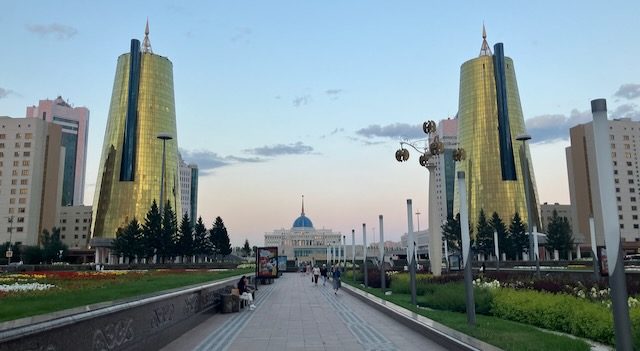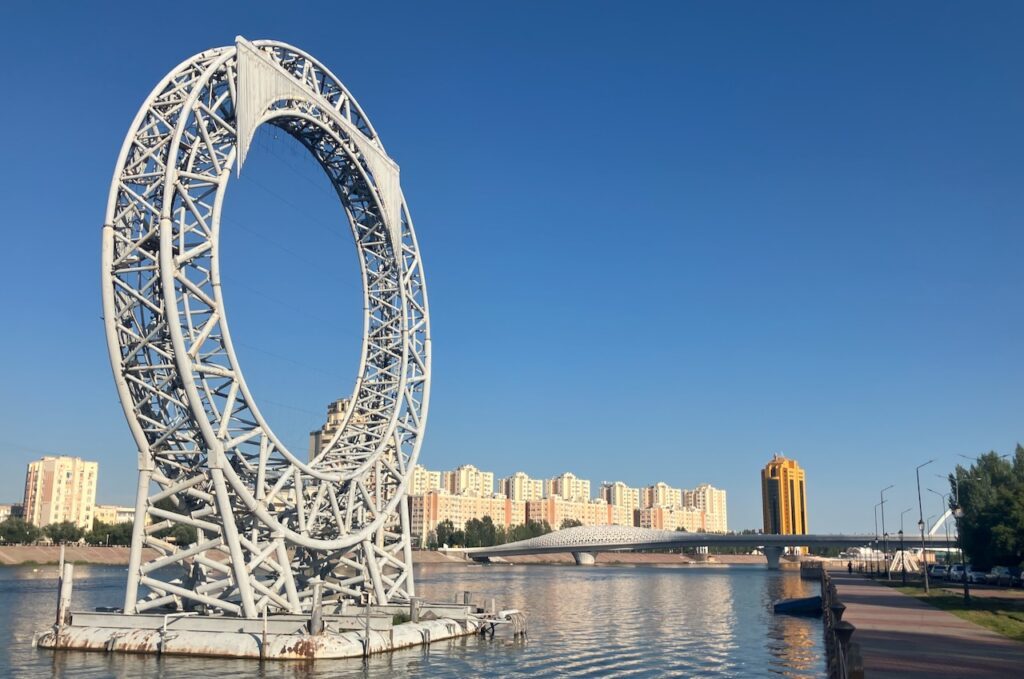ASTANA, KAZAKHSTAN
Astana’s Rise: Where Substance Meets Style
Astana, Kazakhstan’s capital since 1997, has transformed from a futuristic architectural experiment into a vibrant, rapidly growing city. With striking designs and increasing energy, it’s becoming a dynamic, functional hub on the global stage
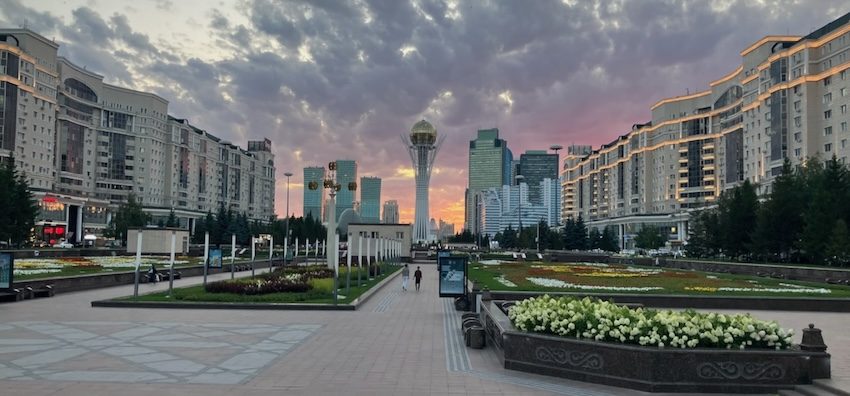
Astana has been Kazakhstan’s capital since 1997, and in that time, it has rapidly transformed into a city known not just for its striking skyline but also for its burgeoning energy. While it once might have been dismissed as an architectural oddity, with comparisons to Dubai for its futuristic design, today Astana’s vibrancy rivals that of Almaty, the country’s commercial powerhouse. In the past, it was easy for outsiders to view Astana as more spectacle than substance. A 2015 article in The Guardian even dubbed it a “toy-city,” a sentiment shared by many observers at the time.
New capitals often face mixed reviews. I’ve seen both ends of the spectrum myself—while Ankara impressed me with its blend of tradition and modernity, Brasilia felt oddly disconnected from the essence of Brazil, and Naypyidaw, Myanmar’s capital, seemed more surreal than functional, with its eerie, empty 20-lane highway as its centerpiece. But Astana breaks this mold. It’s not just the bold, sometimes quirky architecture that makes it stand out; it’s the fact that these buildings form the backdrop to a city that is becoming genuinely lively, increasingly functional, and home to nearly 1.5 million people. The packed buses during rush hour and the sprawling residential developments tell the real story of its growth.
Despite its rapid development, Astana isn’t without quirks that make it easy to poke fun at. The city holds the unusual distinction of having undergone the most name changes of any capital in the world. Starting as Akmolinsk, evolving to Tselinograd and then Aqmola, it became simply Astana—which translates to “capital” in Kazakh—in 1997. But in 2019, the name was changed to Nur-Sultan, in honor of the country’s long-serving president after his retirement. By 2022, it reverted back to Astana, reflecting Kazakhstan’s effort to balance legacy with a forward-looking identity. The confusion lingers, though—train tickets and maps sometimes show both names. On one ticket, I arrived in Astana; on another, I departed from Nur-Sultan—yet both took me to the same station.
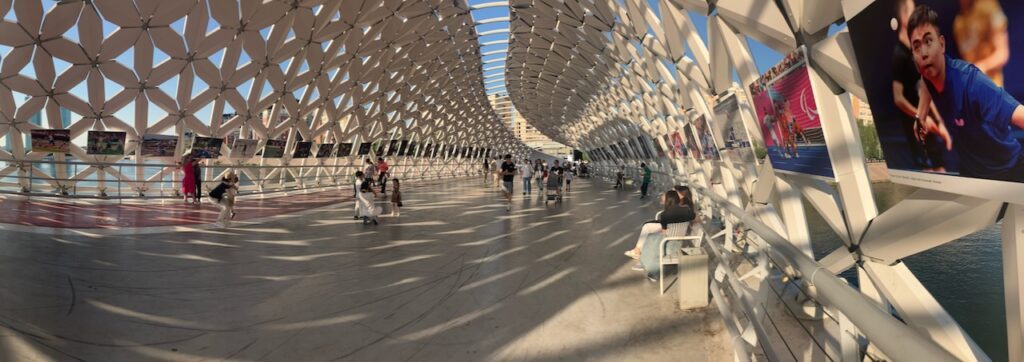
Diverse growth drivers power Astana’s expansion
Astana’s office market is booming, with 1.158 million sqm of Grade B and above office space, not far behind Almaty’s 1.165 million sqm, according to Cushman & Wakefield. The city’s office spaces are home to tenants from various sectors, including mining, energy, transport and a rapidly expanding IT industry, heavily supported by government initiatives. While wealth in many countries tends to concentrate in commercial capitals, Kazakhstan’s resource-rich landscape spreads wealth generation across the country. Astana plays a crucial role as a commercial hub for industries operating in the north and east, including mining in ƒnearby Karaganda region.
Industrial production is also a key player, with factories on the city’s outskirts focusing on food processing and construction materials. Astana’s economic growth is evident in its ongoing construction boom, including a 21.5 km metro system that will connect the airport, new train station, and city center. Inbound investment is largely concentrated in real estate and transport infrastructure, sectors critical to supporting the city’s rapid expansion.

Visitors to Astana will notice the 97-meter Bayterek Tower, a central landmark that defines the skyline. While the views from the top are popular with tourists, the tower’s yellow-tinted windows can slightly detract from the experience. It does make for a great crown like selfie! Beyond the Bayterek Tower, Astana’s cityscape includes a mix of functional and architecturally distinctive buildings that reflect its rapid modernization. Unlike many vanity projects elsewhere, these structures serve a practical purpose, supporting the city’s growing status as a regional hub.

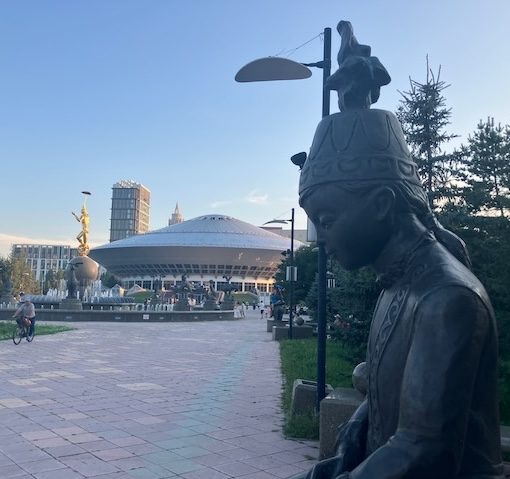
Grade A Towers in Astana: The City’s Business Backbone
Astana’s skyline is dominated by modern office towers that reflect the city’s rapid development. The tallest of them all, Abu Dhabi Plaza, stands at 311 meters and is directly connected to the upcoming metro line, slated for completion by 2026. Alongside Abu Dhabi Plaza is Talan Tower, both are classified as Grade A office spaces. These buildings are part of multi-use developments, combining luxury hotels and office spaces for international corporations.
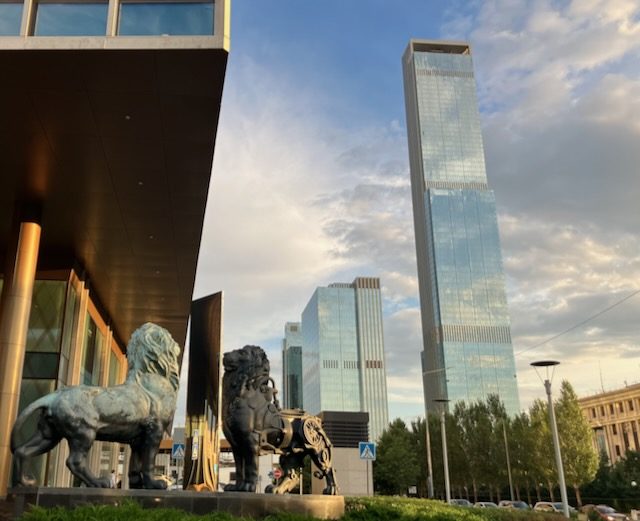
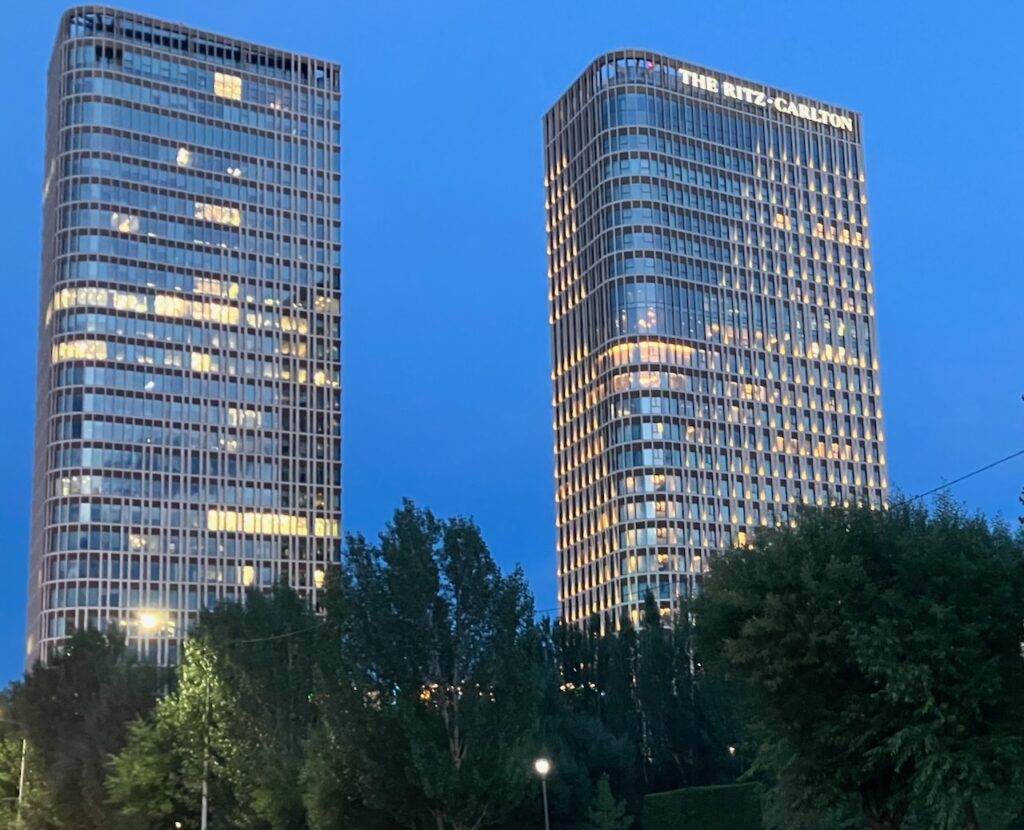
Near the iconic Baiterek Monument, you’ll find the Emerald Towers, a striking architectural feature of Astana. These towers, designed by Canadian architect Roy Varacalli, display a unique asymmetry. Originally planned as a trio, only two towers were completed due to the 2008 financial crisis, but they still stand tall at 201 meters and 180 meters. The tallest tower houses KazMunayGas, Kazakhstan’s national oil and gas company. Nearby, the Kazakhstan Temir Zholy Towers is the headquarters of Kazakhstan’s national railway company. One of the earlier additions to Astana’s skyline is the Astana Tower, which marked the beginning of the city’s architectural evolution.

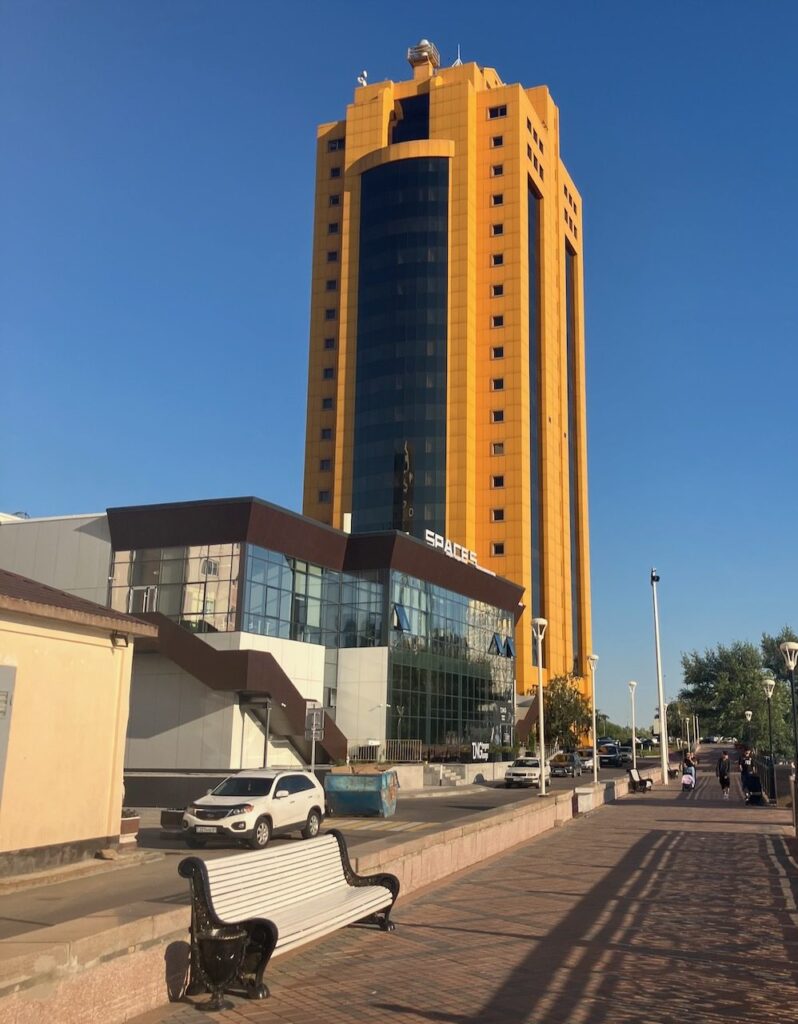
Astana Shopping: Where Winter Meets Warmth
During my visit, temperatures ranged from 20 to 32 degrees Celsius, making it pleasant to stroll along Astana’s wide boulevards. However, the city’s long winters are a different story—Astana is the second coldest capital in the world after Ulaanbaatar, with temperatures plunging to -35 degrees. As a result, large indoor spaces are essential, offering not only sports facilities but also a wide range of international-quality shopping centers. The entrances to many of these malls may appear somewhat austere, often featuring fire doors instead of welcoming sliding glass, but this design makes perfect sense given the brutal winter conditions.
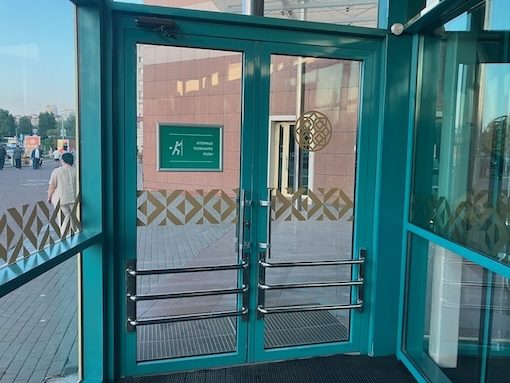
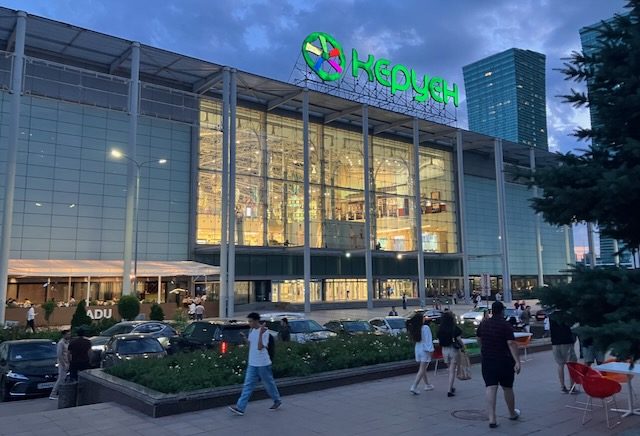
One standout is the Khan Shatyr shopping mall, one of the most unique retail centers I’ve visited. Designed by Norman Foster and completed in 2006, its 90-meter-high tent structure adds a dramatic flair to Astana’s skyline, especially when illuminated in vibrant colors at night. Inside, you’ll find everything from a small amusement park to an artificial beach at the top—an especially popular escape for locals, given the city’s isolation from the coast and the extreme cold.
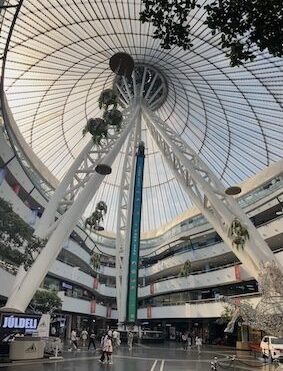
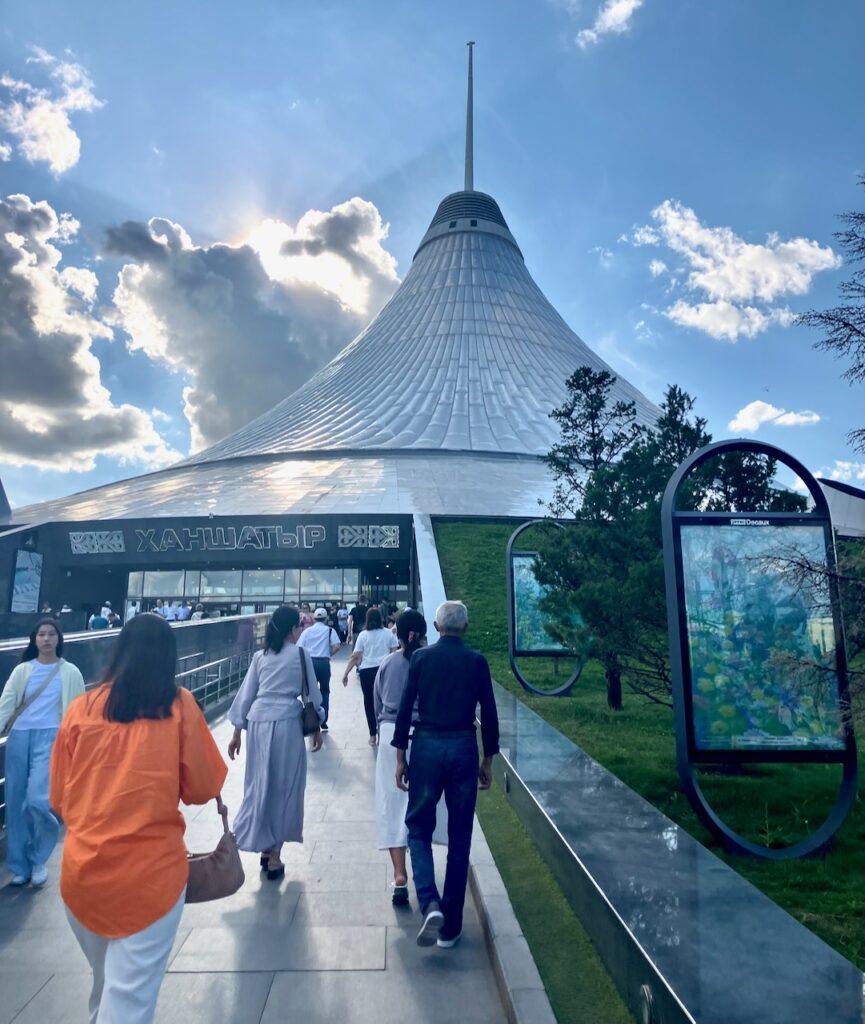
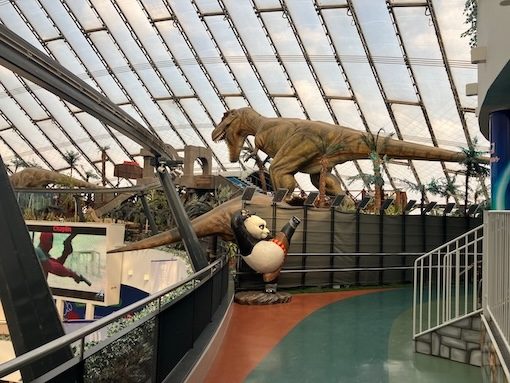
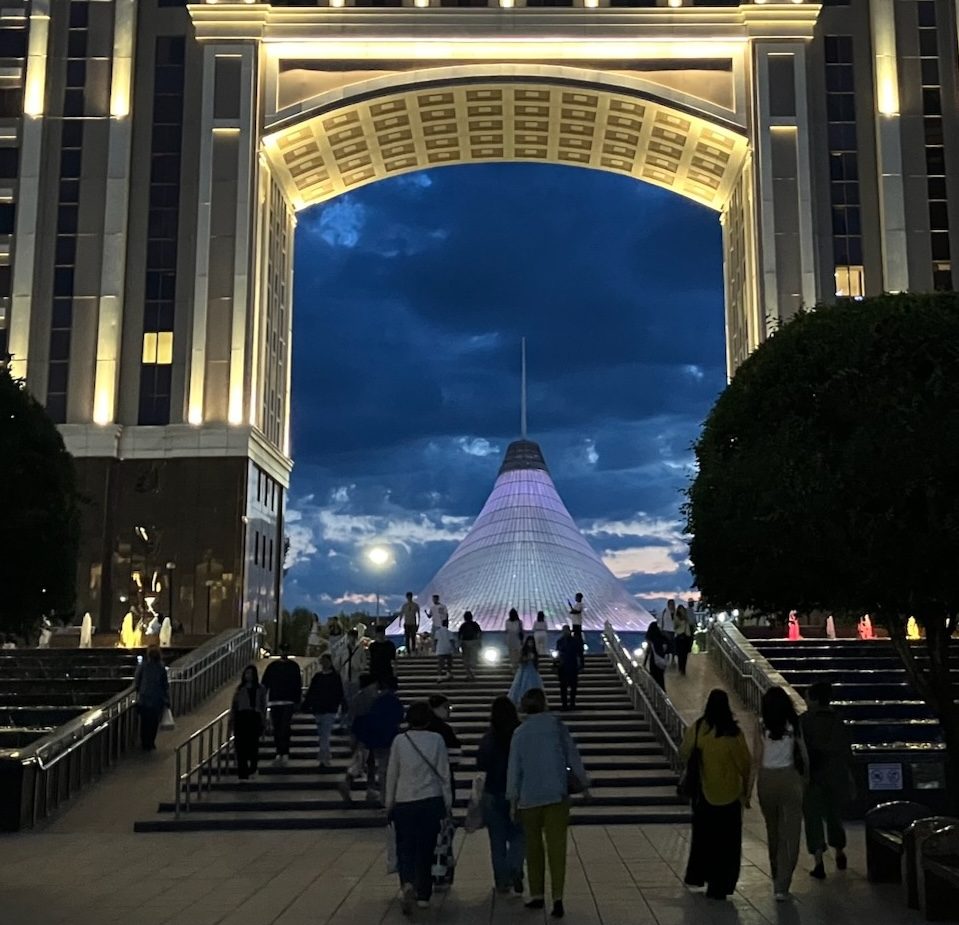
Modern residential options accommodate rapid population growth
Unlike most Kazakh cities, Astana lacks the Soviet-era apartment blocks common elsewhere, as much of its growth occurred after independence in 1991. In their place are modern, larger apartment buildings, which range from middle-class residences to luxury developments. Interestingly, despite the city’s ample space, luxury villas remain limited.
While the new developments are much grander, some design elements still echo Soviet architecture. Many buildings feature retail outlets on the ground floor, but with more upscale offerings, and the residential entrances are typically located at the rear. Most complexes also include the obligatory children’s playgrounds.
A nod to Soviet design is also seen in the inclusion of indoor balconies, a common feature in many units. Some luxury buildings, with their expansive windows and sleek designs, could easily be mistaken for office spaces. In Astana’s long, dark winters, natural light is a valuable asset, making large windows a practical and aesthetic choice.
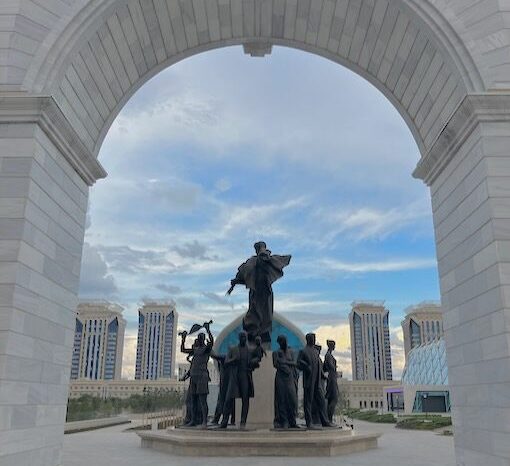
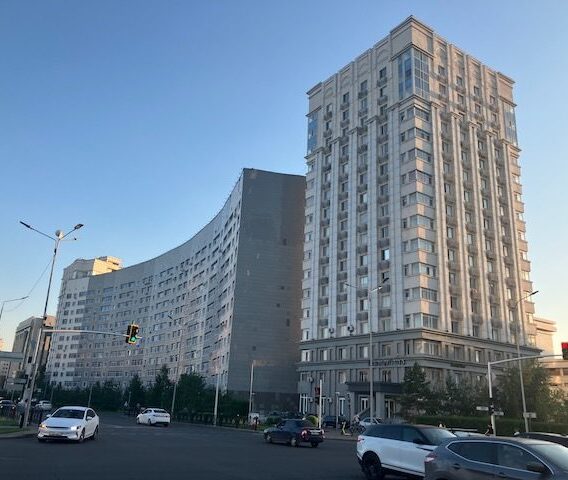
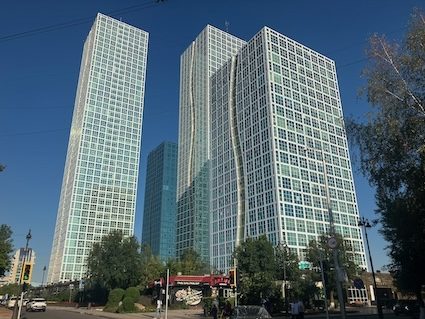
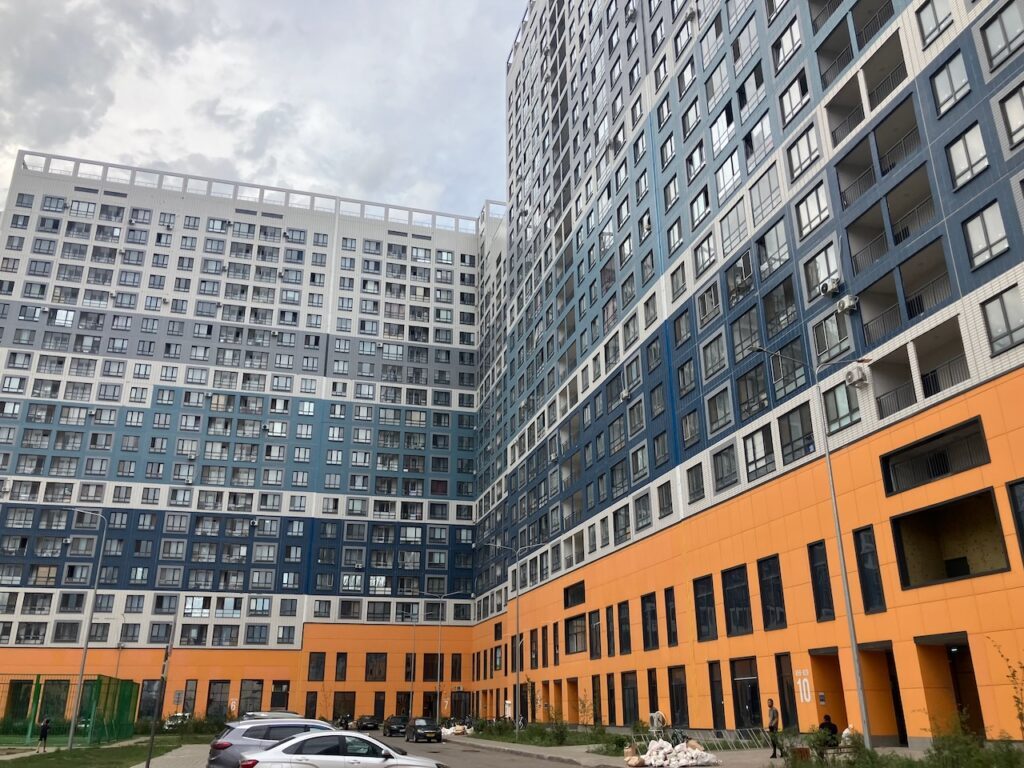
Branded hotels fill the skyline of Astana
Astana’s hotel industry has grown rapidly, supported in part by preferential lending from the Kazakh government, which has helped boost the national hospitality sector. This financial support has led to a surge in branded hotels, especially in the 4-5 star categories. International brands like Sheraton, St. Regis, and Radisson dominate the skyline, reflecting Astana’s position as a major political and business center. Newer developments, such as the Hilton Astana, located within the Expo 2017 complex, highlight the city’s focus on high-end, business-oriented accommodations.
However, for budget-conscious travelers, lower-end hotels are fewer in number. Many, including myself, opt for short-term apartment rentals. These offer more flexibility and provide a more first-hand feel of life in the city. These apartments are particularly popular among tourists and those staying in the city for extended periods for business. Additionally, with large-scale events like international exhibitions and sporting competitions, hotel space can become scarce during peak periods, making early booking essential
The influx of branded hotels has not only raised the standard of hospitality but also positioned Astana as a destination for global conferences and major events, further strengthening its importance as a commercial hub.
Number of visitors to accommodation establishments in Astana

Source: Bureau of National statistics – Agency for Strategic planning and reforms of the Republic of Kazakhstan
Visitor numbers to Astana have surged over the past 20 years, surpassing one million in 2022, with foreigners now making up 20% of the total. Despite the impact of COVID-19 on the hotel industry, the city’s reliance on business and official travel kept occupancy levels more stable than in typical tourist destinations along with a rapid rebound.
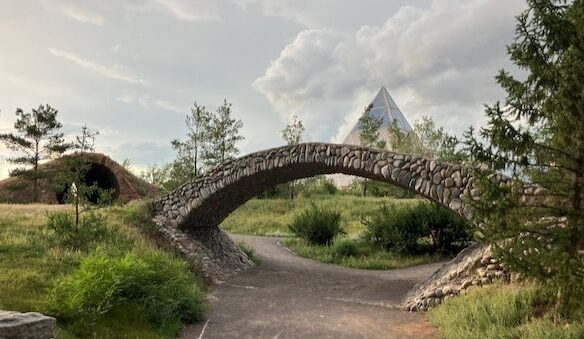

Astana: Travel tips
Getting around Astana is relatively easy, thanks to its extensive and modern bus system. Most buses pass through the central area, where many of the city’s main attractions are located. The best option for public transport is the Transcard, a stored-value card that can be swiped when boarding the bus. Alternatively, you can use the Avtobus app, which allows you to pay by scanning a QR code on each bus. This app is also useful for traveling to other cities like Pavlodar, Semey, and Shymkent, though note that it doesn’t work in Almaty.
One interesting observation in Astana is the “cat-and-mouse” game between passengers and ticket inspectors. Roughly half of the riders don’t pay until an inspector boards. When that happens, you’ll often see a flurry of hands scanning QR codes on their phones. Rather than cracking down harshly on fare dodgers, inspectors seem to serve more as a gentle reminder to pay. The system is effective, though, as inspectors are frequent—on one 35-minute ride, my card was checked three times by different inspectors!
A new overhead metro system is currently under construction, with plans to open by 2026. Once completed, it will provide better access to the airport and train station. In the meantime, Yandex Taxi is a convenient option if you’re traveling with luggage or pressed for time. The app is available in English and is very user-friendly. Yandex Maps is also a great tool for navigating the city, offering up-to-date information on bus routes and times, though it’s not always 100% accurate.
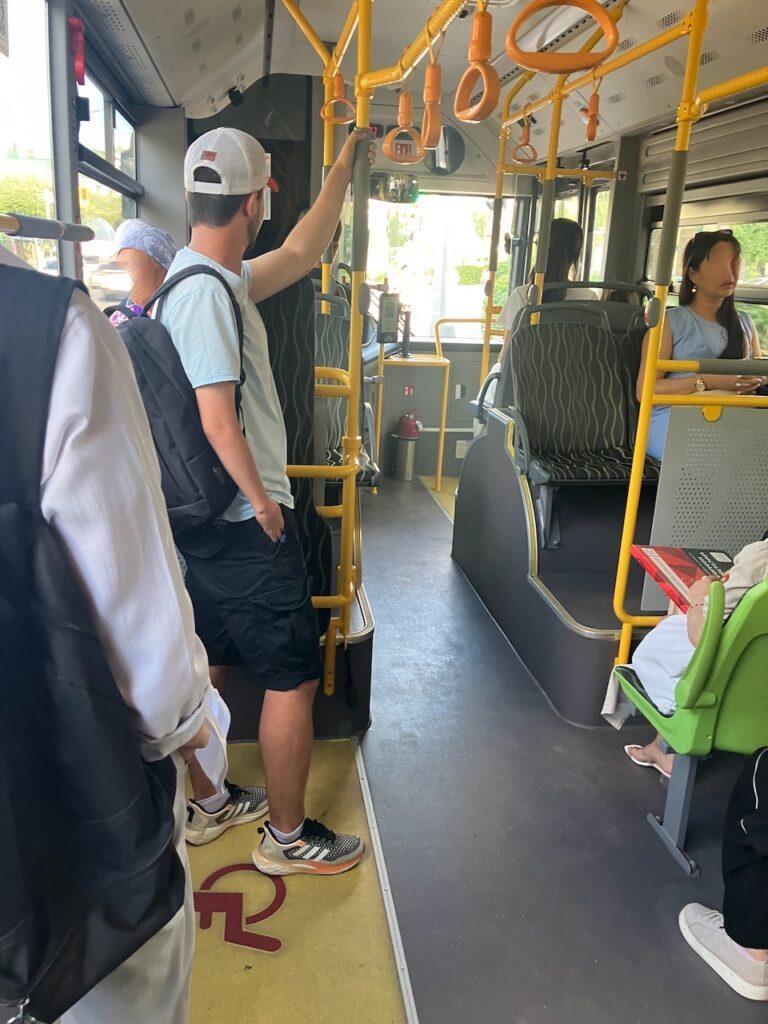
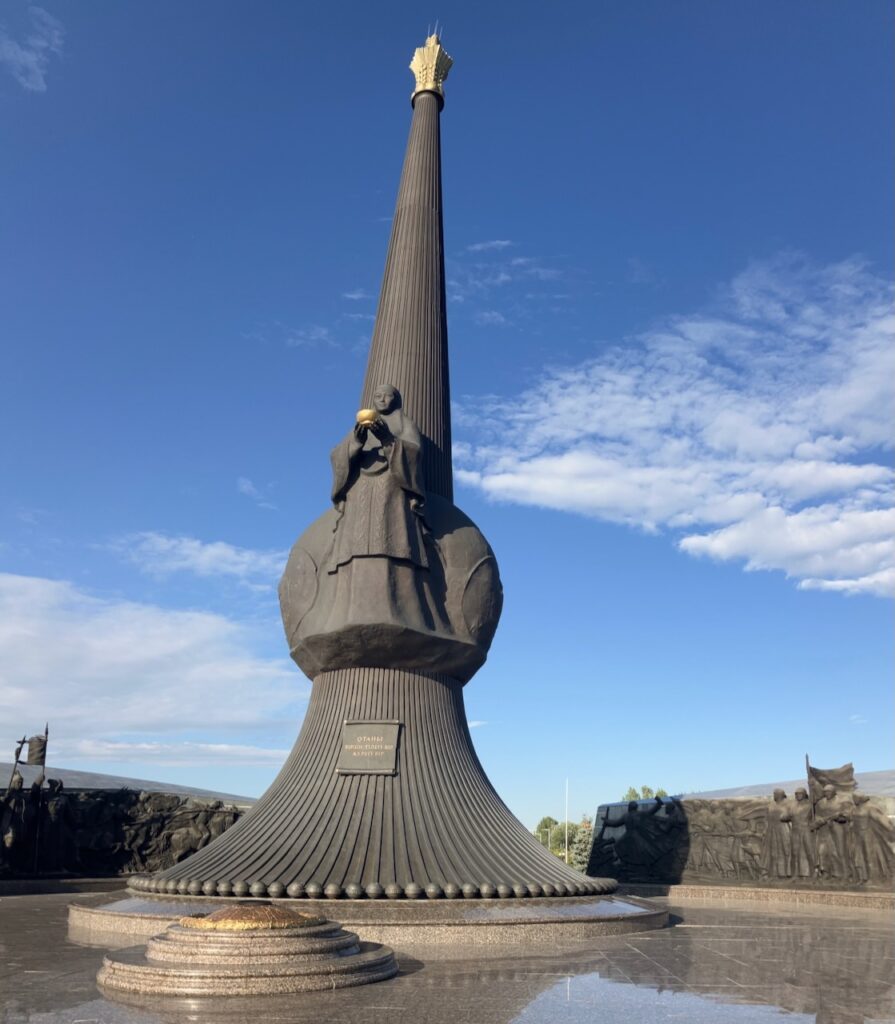
Astana: The Modern Marvel of Central Asia
Astana may not be what comes to mind when people think of Central Asia, but its extreme modernity offers a fascinating glimpse into the region’s future. For those interested in what Central Asia is becoming, rather than what it once was, Astana is a compelling destination. Of all the cities I visited in the region, Astana stood out as the most interesting, blending cutting-edge architecture with urban conveniences.
Its proximity to more traditionally Soviet-style cities like Pavlodar and Karaganda adds to the appeal, offering visitors a chance to contrast modern Astana with these more industrial, historic centers. Additionally, the expansive steppes of Kazakhstan and Siberia are within reach for those seeking to explore the region’s vast landscapes.
Astana is not just for sightseeing but also a city where you can relax and take things slow, thanks to its many restaurants, coffee shops, and casual dining options. For English beer enthusiasts, you’ll be pleased to know that you can find London Pride and Abbot Ale in local supermarkets, making it easier to feel at home. While many visitors take in Almaty and the western part of the country, the north and east are in some ways more intriguing and offer a very different perspective on Central Asia.
